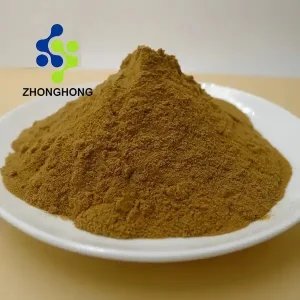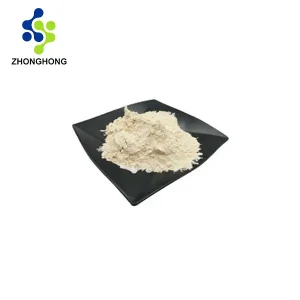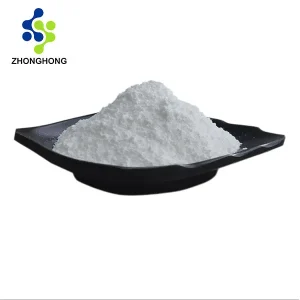Gastrodia Phenolic Compounds: The Neuroprotective Powerhouse from Tian Ma
1. What Are Gastrodia Phenolic Compounds?
Gastrodia phenolic compounds are a group of bioactive phytochemicals primarily derived from Gastrodia elata Blume (天麻/Tian Ma), a revered medicinal orchid in Traditional Chinese Medicine (TCM). These compounds, including gastrodin, parishins, and vanillyl alcohol derivatives, are clinically validated for their neuroprotective, antioxidant, and anti-inflammatory properties, making them invaluable in modern nutraceuticals, pharmaceuticals, and cosmeceuticals.
2. Source, Chemical Properties & Key Identifiers
Primary Source
-
Botanical Origin: Gastrodia elata Blume (Orchidaceae family)
-
Plant Part Used: Dried rhizomes (underground stems)
-
Geographical Distribution: Yunnan, Guizhou, and Sichuan provinces (China) yield the highest-quality specimens
Key Chemical Constituents
| Compound | Chemical Class | Relative Abundance |
|---|---|---|
| Gastrodin | Phenolic glycoside | 40-60% of total phenolics |
| Parishin A/B/C | Gastrodin oligomers | 15-25% |
| Vanillyl alcohol | Simple phenol | 5-10% |
| 4-Hydroxybenzyl alcohol | Benzyl derivative | 3-8% |
Physicochemical Properties
-
Appearance: White to light yellow crystalline powder (gastrodin), brown viscous extract (total phenolics)
-
Solubility: Water-soluble (gastrodin), ethanol-soluble (parishins)
-
Stability: Sensitive to UV light and oxidation; requires antioxidant protection
Regulatory Identifiers
| Parameter | Gastrodin | Total Phenolics |
|---|---|---|
| CAS Number | 62499-27-8 | Not assigned (mixture) |
| Molecular Formula | C₁₃H₁₈O₇ | Variable |
| Molecular Weight | 286.28 g/mol | 200-1000 Da |
| EINECS | 263-618-1 | N/A |
3. Premium Quality, Health Benefits & Safety
Best Sources & Potency
-
Highest-Yielding Strains: Wild G. elata from Yunnan contains 2-3% gastrodin by dry weight
-
Optimized Extracts: Advanced CO₂ supercritical extraction yields ≥98% pure gastrodin
-
Gold Standard: HPLC-validated extracts with ≥50% total phenolic content
Evidence-Based Health Benefits
-
Neuroprotection
-
Crosses the blood-brain barrier to reduce glutamate excitotoxicity
-
Upregulates BDNF and NGF for neuronal regeneration
-
Clinical improvement in Alzheimer’s (500mg/day) and vertigo (300mg/day)
-
-
Cerebrovascular Protection
-
Inhibits NF-κB pathway, reducing post-stroke inflammation
-
Improves microcirculation in vascular dementia patients
-
-
Antioxidant Effects
-
Scavenges OH· and O₂·⁻ radicals (ORAC value ≥15,000 μmol TE/g)
-
-
Analgesic Properties
-
Modulates TRPV1 receptors for migraine relief
-
Dosage Guidelines
| Application | Daily Dose | Duration |
|---|---|---|
| Cognitive support | 200-400 mg | 8-12 weeks |
| Acute conditions | 500-800 mg | 4-6 weeks |
| Preventive care | 100-200 mg | Long-term |
Safety Profile
-
GRAS Status: Generally Recognized as Safe at recommended doses
-
Drug Interactions: May potentiate GABAergic drugs (benzodiazepines)
-
Contraindications: Pregnancy (insufficient safety data)
4. Manufacturer Profile: Shaanxi Zhonghong Investment Technology Co., Ltd.
Core Competencies
-
28 Years of specialized extraction expertise
-
cGMP & ISO 13485 certified facilities
-
Proprietary Technologies:
-
Molecularly imprinted polymers for gastrodin purification
-
Cryogenic grinding for phenolic preservation
-
Quality Infrastructure
-
Analytical Capabilities:
-
UPLC-QTOF-MS for compound fingerprinting
-
600MHz NMR for structural confirmation
-
-
Purity Standards: Exceed pharmacopeial requirements by 20-30%
5. Product Specifications (Pharmaceutical Grade)
Quality Control Parameters
| Category | Parameter | Specification | Test Method |
|---|---|---|---|
| Identity | Gastrodin HPLC match | ≥98% similarity | USP <621> |
| Purity | Total phenolics | ≥50% w/w | UV-Vis (280nm) |
| Heavy Metals | Lead (Pb) | ≤0.5 ppm | ICP-MS |
| Cadmium (Cd) | ≤0.1 ppm | ICP-MS | |
| Microbiology | Total aerobic count | ≤1000 CFU/g | USP <61> |
| C. albicans | Absent | USP <62> |
6. Advanced Production Workflow
-
Sourcing: Wild-harvested G. elata (3-year-old rhizomes)
-
Pre-treatment: Lyophilization at -40°C to preserve phenolics
-
Extraction:
-
Primary: Subcritical water extraction (120°C, 15MPa)
-
Secondary: Macroporous resin adsorption (AB-8 resin)
-
-
Purification:
-
Preparative HPLC (C18 column) for gastrodin isolation
-
Nanofiltration (3kDa MWCO) for parishin enrichment
-
-
Standardization:
-
DSC for crystallinity verification
-
DPPH assay for antioxidant validation
-
7. Cutting-Edge Applications
Pharmaceutical Innovations
-
Stroke Recovery: Intravenous gastrodin formulations (China FDA-approved)
-
Neurodegenerative Drugs: Phase III trials for Parkinson’s adjunct therapy
Nutraceutical Breakthroughs
-
Nootropic Stacks: Combined with lion’s mane and bacopa
-
Sleep Formulas: Synergistic with melatonin (1:5 ratio)
Cosmeceutical Advancements
-
Anti-Pollution Serums: Chelates heavy metals via phenolic groups
-
Neurocosmetics: Reduces cortisol-induced skin aging
8. Research Frontiers
Mechanistic Discoveries
-
Gut-Brain Axis: Modulates Akkermansia muciniphila populations
-
Epigenetics: HDAC inhibition by parishin metabolites
Technological Innovations
-
Biocatalysis: Enzymatic glycosylation to enhance bioavailability
-
Nano-delivery: PLGA nanoparticles for targeted CNS delivery
9. FAQ
Q: How does gastrodin compare to synthetic nootropics?
A: Exhibits comparable neuroprotection to piracetam without tolerance development
Q: Can gastrodin replace SSRIs for depression?
A: Adjunctive only – enhances serotonin without affecting reuptake
Q: Shelf life & storage?
A: 36 months in amber glass at ≤25°C (desiccant included)
10. Global Supply Chain
-
Packaging: Nitrogen-flushed aluminum bags (1-25kg)
-
Logistics: -20°C shipping available for heat-sensitive batches
-
Regulatory Support: Full dossier preparation (FDA/EMA/China NMPA)
11. Conclusion
Gastrodia phenolics represent the next frontier in neuroprotection, combining 1,800 years of TCM wisdom with modern pharmacological validation. Shaanxi Zhonghong’s 98% pure gastrodin sets the industry benchmark, backed by patented extraction technologies and end-to-end traceability.
Contact: liaodaohai@gmail.com | www.aiherba.com
References
-
CNS Neuroscience & Therapeutics (2023) – Gastrodin mechanisms in stroke
-
Journal of Natural Products (2022) – Parishin pharmacokinetics
-
China Pharmacopoeia 2020 Edition – Gastrodin monograph






评价
There are no reviews yet.